It has been a couple of months since this blog has become subdued and has lacked regular updates. The excuses are many and perhaps best left unsaid. But hopefully it is a thing of past, and hopefully I will have regular updates here in the days to come. Let me begin with a set of images of children from the mountains—Himalayas to be precise—all the way from Jammu and Kashmir to Arunachal Pradesh.
When I was about to begin this post, my plan was to hastily post a few images of children from my recent trip to Lahaul and Spiti region. Looking through the impressions of those innocent faces, a thought passed to me that the children from many parts of the Himalayas look a lot alike. They all come bundled with a twinkle in their eyes and a charming innocence in their faces. I then thought it would be worthwhile making a larger compilation of images from across the mountains. Here we go!
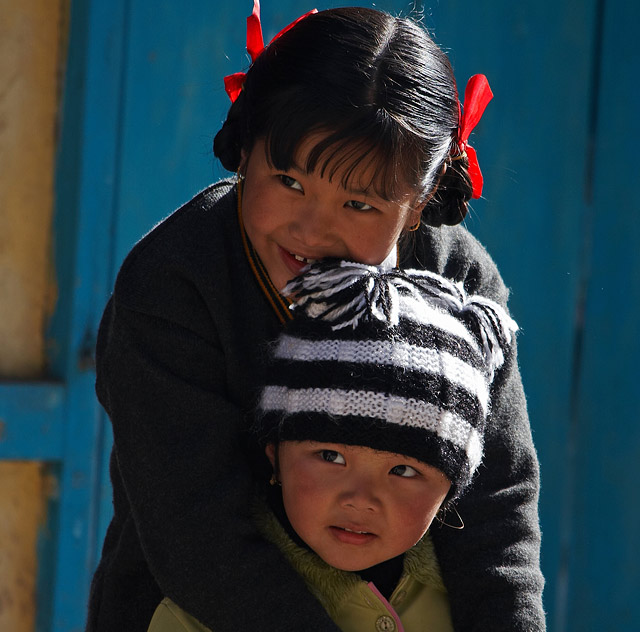
Let me begin with an old image from Tawang in Arunachal Pradesh. It is a photograph that made me happy and gave me some boasting rights. It was one of my very first images to get licensed for a reasonably good price.
On a crisp morning when we were searching for breakfast in the main street of Tawang, only to find that most restaurateurs were too lazy to serve what we wanted and preferred to offer us nothing more than a sandwich. Left without choice, sandwich is what we had to order and even that was bound to take some time to make. While the lazy cook took his time on the sandwich, I wandered the streets with my camera over the shoulder. It was the hour of the day when Indian Army bus was to come and pick up school children from their homes. This girl waited for the bus, while her little brother gave her company. I watched them chat with each other fondly for a while before making this picture.
Two years later, it was used by UNICEF for their annual calendar that had pictures of children from various ethnicities from across the world.
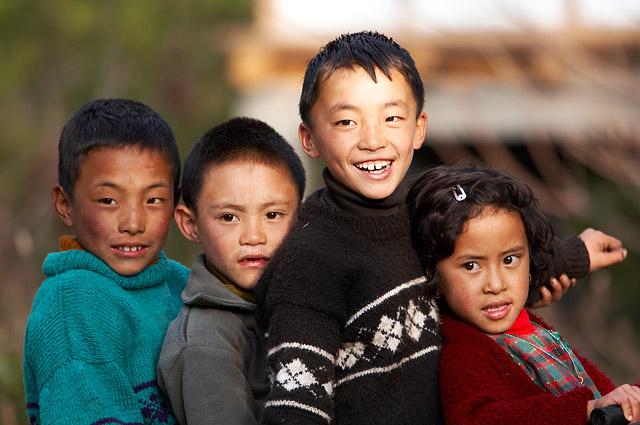
Happy, carefree children can be seen everywhere in Arunachal. All these four kids were riding on a bicycle—just one bicycle—at Jang Village on the way to Tawang. The tallest of the kids seemed to be the ‘leader of the gang’ who dictated what games they play and how they spend time. While the elders in this small village were away working, these kids were having a ball and posing happily for tourists.
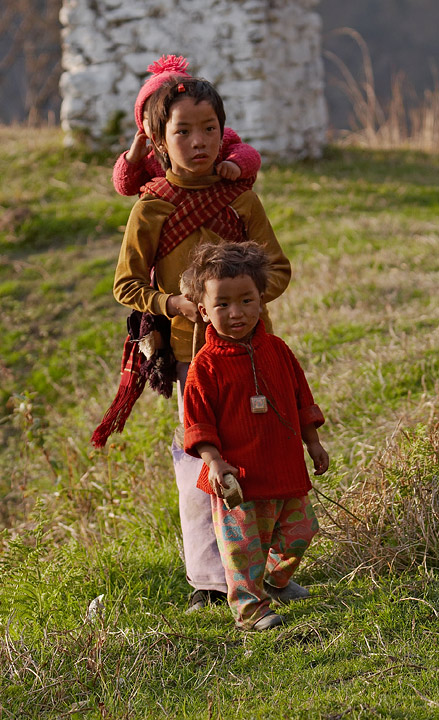
While the four kids above were having a good time, this girl was performing her duties nearby, taking care of her siblings. They seemed amused to see us, a little confused about how best to interact with us. The little kid riding on the back of her sister was shy and unsure what to do, occasionally peeping out to have a better look at us.
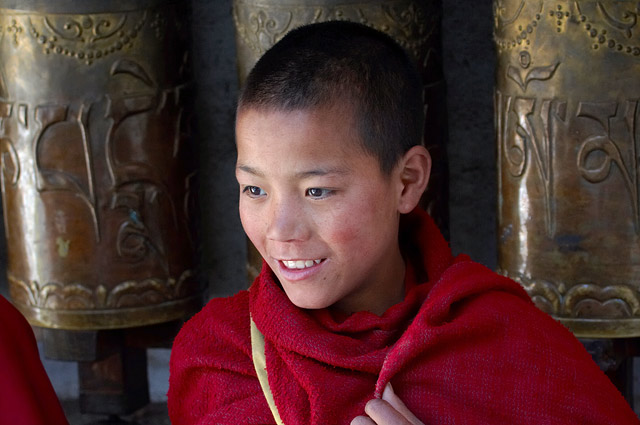
It is common to see little monks like this one—monklings as a friend once described them—giggling and running around chasing each other in the courtyard of the monasteries. We stopped by to have a chat with this fellow and his friend, but they turned from ebullient to shy when we spoke to them.
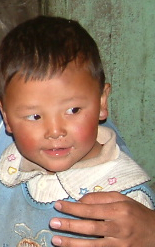 The image of this little fellow in Thangu Village is northern parts of Sikkim is perhaps the only image I have, of children in Sikkim. It is long time since I backpacked in Sikkim, a place I long to go back to but the the ordeal of reaching there keeps me out. Those were the days when I was shooting with a film camera and focused on photographing landscapes and only landscapes. Hopefully I will return there soon someday to get another dose of this beautiful mountain state.
The image of this little fellow in Thangu Village is northern parts of Sikkim is perhaps the only image I have, of children in Sikkim. It is long time since I backpacked in Sikkim, a place I long to go back to but the the ordeal of reaching there keeps me out. Those were the days when I was shooting with a film camera and focused on photographing landscapes and only landscapes. Hopefully I will return there soon someday to get another dose of this beautiful mountain state.
Uttarakhand is another region in Himalayas, from where I have no images of children. It is also another place that I visited a few times long ago, when my focus was largely on photographing landscapes. And similar to Sikkim, I hope to go back and backpack again some day soon, but haven’t made it so far thanks to the ordeal of getting there.
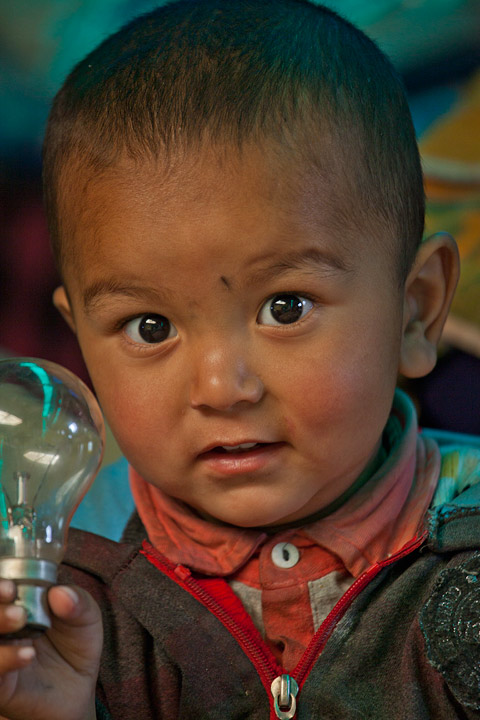
Next, when I was looking for images from Himachal Pradesh, the first that came to my mind was this little Thomas Alva Edison experimenting with his (rather dangerous) toy that was soon taken away from him. At Darcha Village, the last permanent habitation in Himachal Pradesh on the long road to Ladakh, I was tired and was not really keen to take my camera out. But one look at this guy, I knew I wasn’t left with that choice.
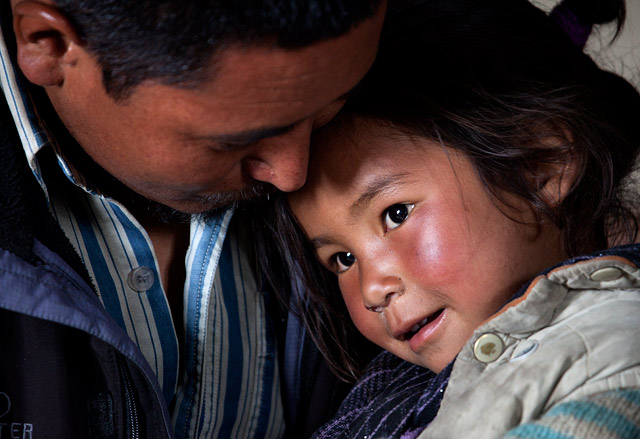
At Langcha Village in Lahaul and Spiti, we were invited for a cup of tea at the house of our guide Lara. It was a day when most of the village was in Kaza for the annual fair, having a good time watching performances. While Lara’s last daughter had no idea of the fair, she still was pleading with him to take her to Kaza, to enjoy a jeep ride. She was pacified by her father till she forgot about it.
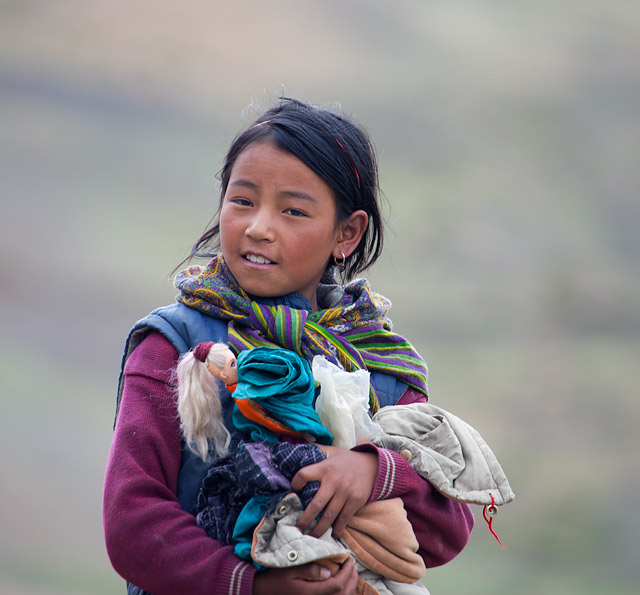
Eldest of Lara’s children, Lobsang must be about ten years old or less. Unlike other kids in the village, she had a much serious demeanour and seemed to have matured beyond her age. She also appeared obedient and spending a lot of time helping the elders with household chores besides going to school. I do not know why, but I had a feeling that she had lost her childhood sooner than one would.

Among all the children of the mountains I have seen, the Ladakhi kids are perhaps the naughtiest and the bravest. Here is a bunch of them having a good time at Korzok Gustor Festival, when monks wearing demon-like masks were performing at the courtyard of the monastery. Korzok Gustor Festival is an annual celebration at the monastery at Korzok Village, located on the banks of Tso Moriri Lake.
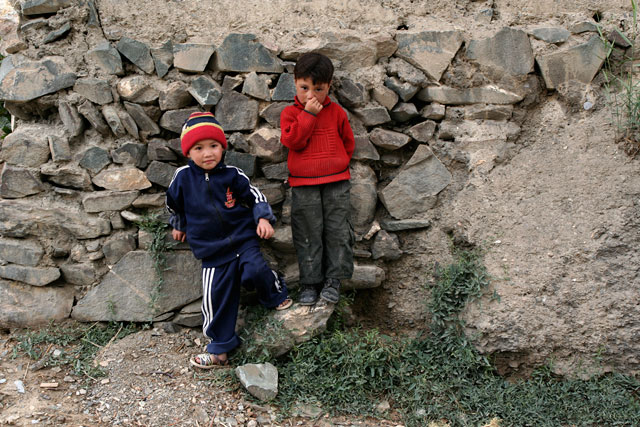
These kids were playing with stones near Lamayuru Village when I was out for a long walk. They became very conscious on seeing me and stood next to the wall, looking at me awkwardly. They were good for the camera anyway, awkward or otherwise.
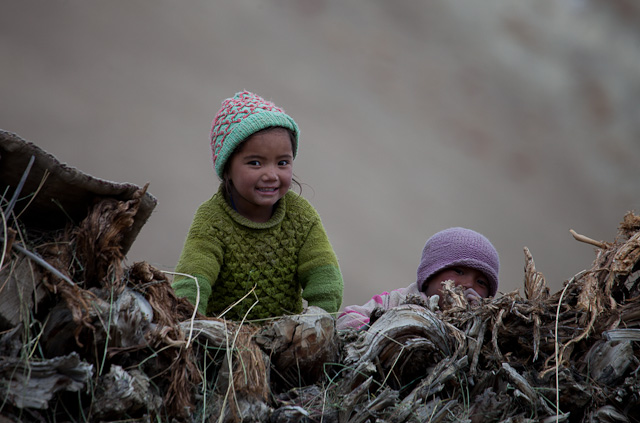
We had an awesome awesome time playing with kids in Zanskar during a cold winter season. Some of us played football with them (when the temperatures were somewhere ten degrees below zero), dragged the sledges for them or just laughed and ran around with them. In a season when Zanskar is completely cutoff by road from rest of the world and buried in snow, people of Zangle Village—kids and elders alike—were happy to have some visitors. These little siblings watched us play from their terrace. This girl called us as we were walking away and we had happy conversations in languages incomprehensible to each other.
Every traveller becomes a photographer-at-ease on his/her journeys through Ladakh. As a friend who recently returned from Ladakh remarked, every photograph looks like it is post-card worthy. Sometimes, this incredible landscape comes with its challenges. It becomes difficult to make images that are distinct from the millions of frames that flood the internet and to capture something that stands out from the rest. But an effort goes on, nonetheless.
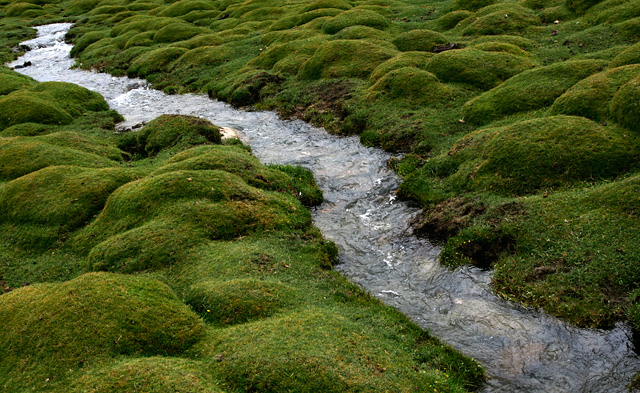
Ladakh is a high altitude desert with barren slopes, stark landscapes and treeless terrains. Yet, it has no shortage of water which flows abundantly from snow melting through the summer months and feeding its streams and rivers. In the rare occasions where you see some table lands fed by such streams, you also see an eruption of greenery that is a contrast from the brown landscapes surrounding it. Here is one such place near Tso Moriri Lake.
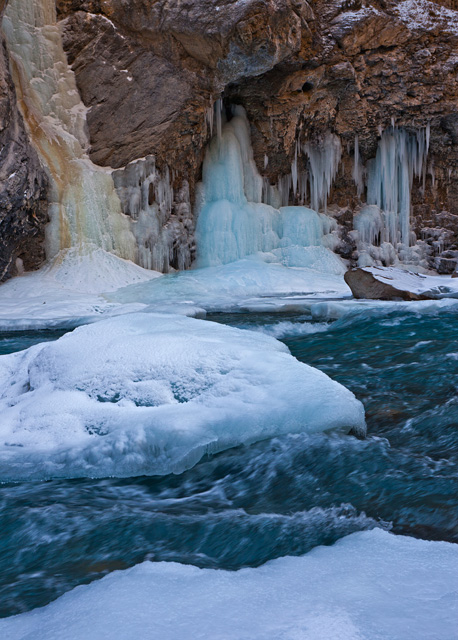
While Ladakh is easily accessible in the summers and rewards the visitors with its beautiful landscapes, jaw-dropping spectacles unfold in the winter months. Temperatures dipping twenty below zero changes the way the world appears, like in the case of this waterfall that stays frozen during the winter months next to a blue Zanskar River.
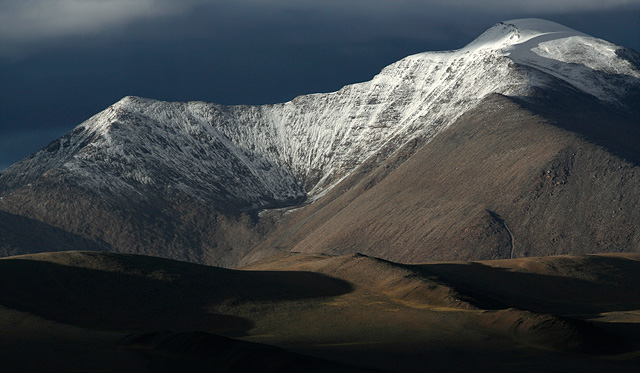
Snowfall is rare in the summer months. But when it happens, a day of snowy surprise can bring in magical changes in the landscapes. This mountain, near Tso Moriri Lake, was largely brown on the day I arrived here. It snowed one night and remained cloudy for the large part of next day. The slopes were transformed by the fresh, powdery snow.
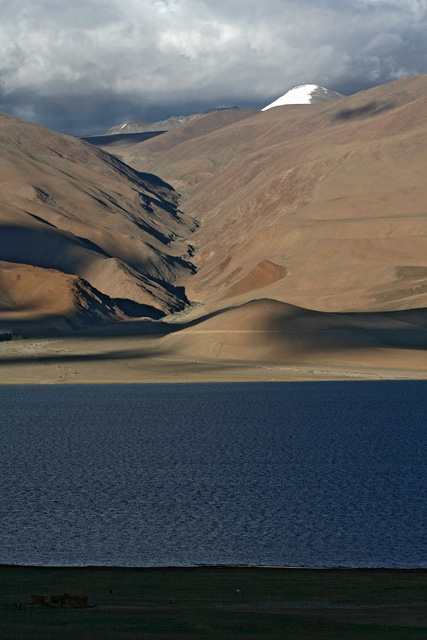
One of the prized possessions of Ladakh are its vast, blue lakes that are trapped in the depressions of changthang plateau. Tso Moriri is one such lake whose blue colours stand out against the chocolate-brown slopes surrounding it. Next to the lake is a small pasture that feeds the animals. and fields that feed the people of Korzok Village overlooking the lake.
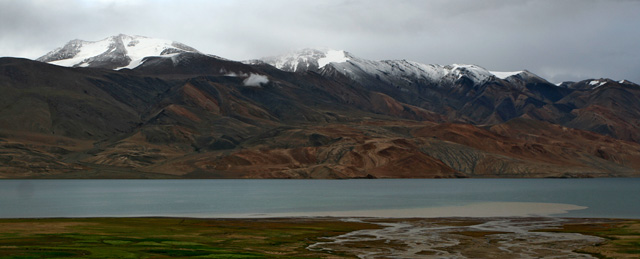
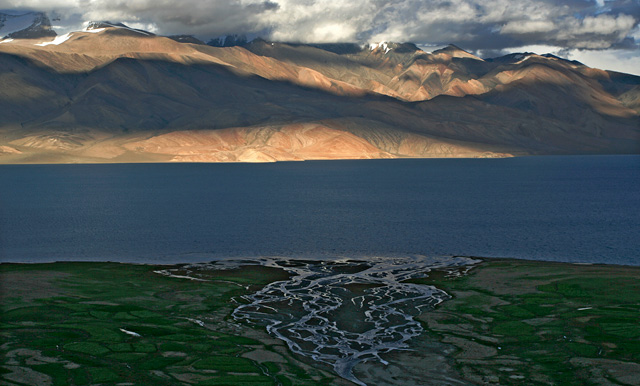
Tso Moriri takes different hues in different weathers, varying from deep blue on a sunny day to a dull grey when it is cloudy. Perhaps it simply reflects the colour of the sky, calling nothing its own. The lake is fed by streams like the one in the picture above. The lake’s waters have no outlet, because of which it is turning salty over ages. The waters of this brackish lake tastes mildly salty, if at all, and has only a fraction of saltiness that the seawater possesses.
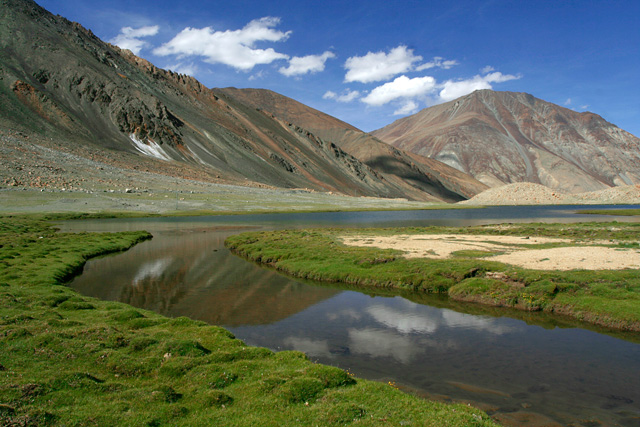
Pangong Lake is another brackish water lake in Changthang Plateau. But one doesn’t have to take Ladakh destination by destination. Stop anywhere for a break and you will find something beautiful, like this unnamed lake on the way to Pangong Tso.
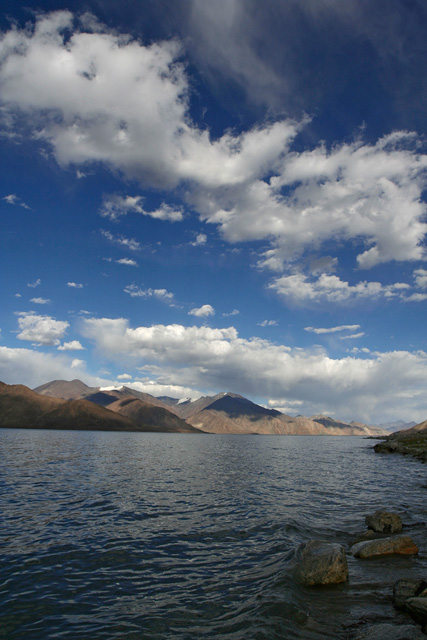
Pangong Lake itself, is the grandest of all water bodies in Ladakh, perhaps in the whole country. It stretches for more than a hundred kilometers across two countries. A man from Indian Army who helped me park my bike here said, ‘do you see the mountains far away? They are in China’.
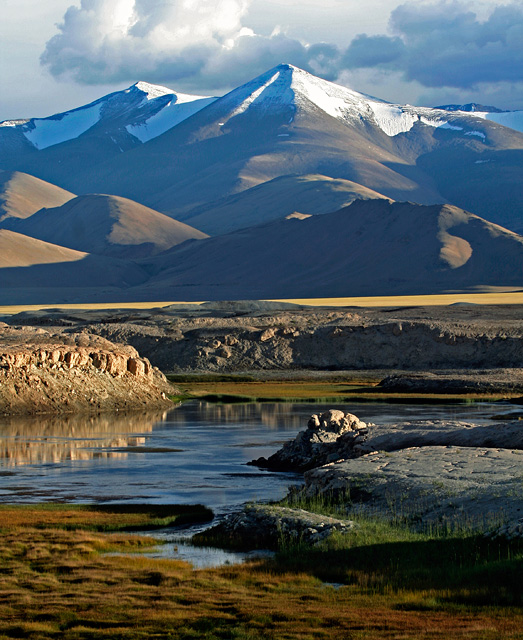
Another large lake in Ladakh is Tso Kar, which is more of a marshland than lake. The huge plain of Tso Kar allows plenty of grass to grow in the plateau and in turn supports a variety of wildlife that feed on this grass.
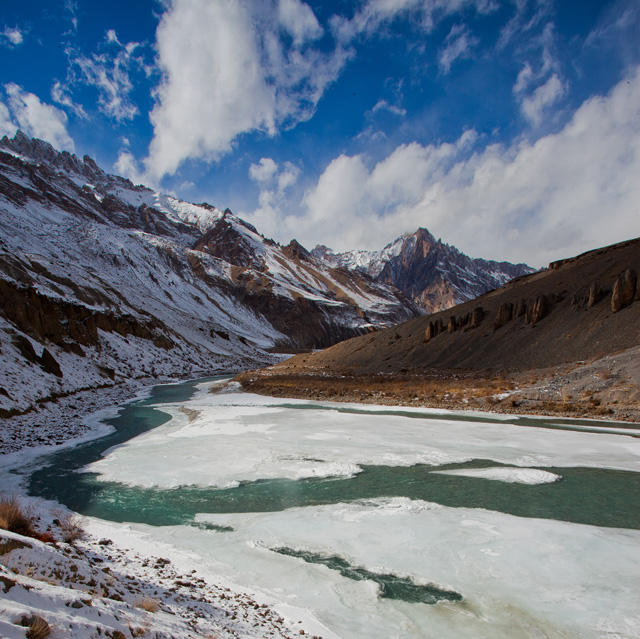
Tso Kar Lake and rest of Changthang Plateua lie on one side of Manali-Leh highway, while on the other side is the still-remote and inaccessible Zanskar Valley. The lone road to Zanskar remains closed for nine months a year, buried in snow. In the winter months, the frozen Zanskar river then becomes the highway for people of Zanskar.
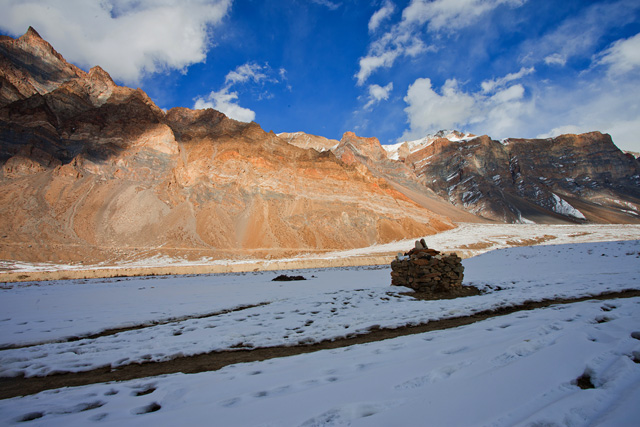
Snow filled Zanskar Valley in the winter months.
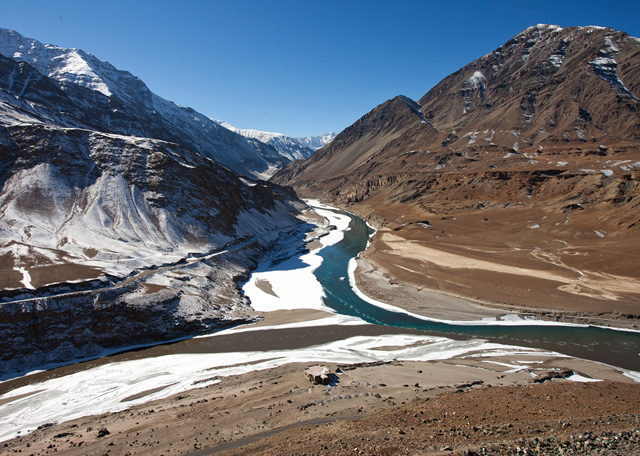
Zanskar River enters Indus Valley and merges with River Indus near a village called Nimmu. In the above photograph is the confluence, seen from the slopes nearby. The deep blue river emerging from the mountains is Zanskar, while the muddy flow from the left is Indus River.
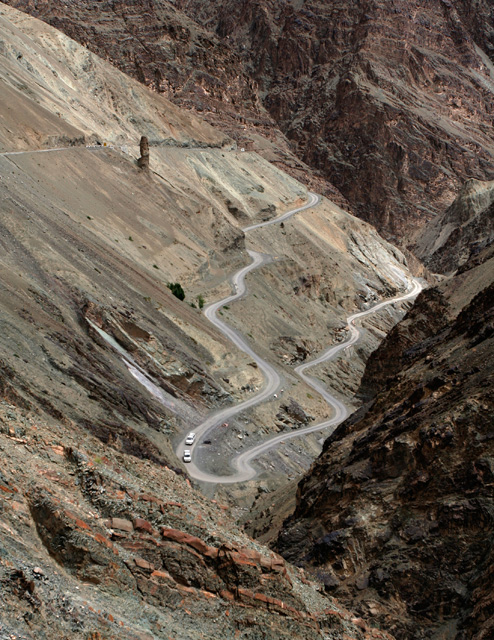
Further, downstream Indus is the village of Lamayuru, which is approached by switch back roads climbing swiftly along the steep slopes. Some turns along the way are so tight that buses have to go back and forth to get past a curve. This road is part of the Srinagar-Leh highway.
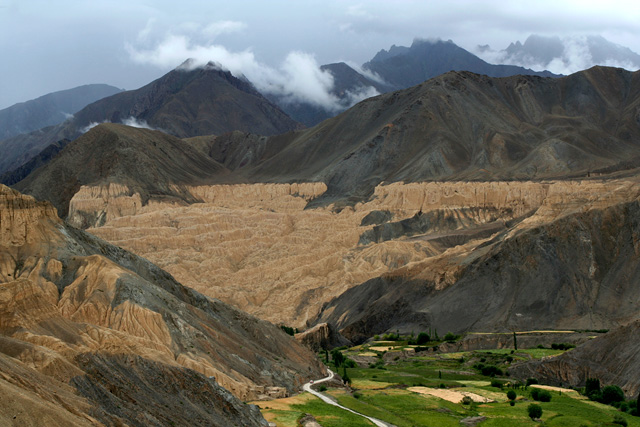
Lamayuru Village is located in a place that was once inundated with waters of a high-altitude lake. The presence of the lake is apparent even today, thanks to curious formations left behind from the drained lake. The yellow slopes, often called moon-land-view, clearly indicate the level of the lake’s water.
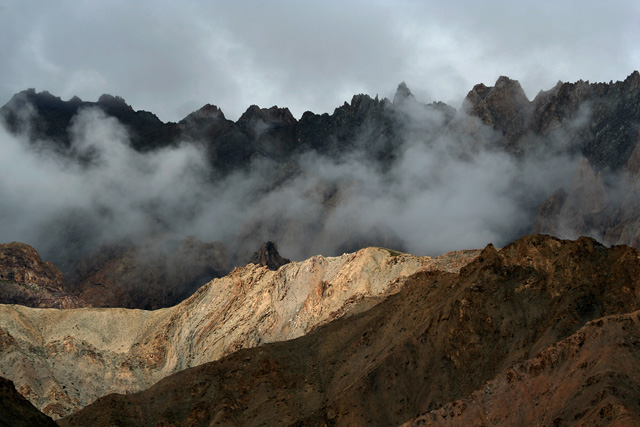
Play of sun and clouds on the mountains of Lamayuru.
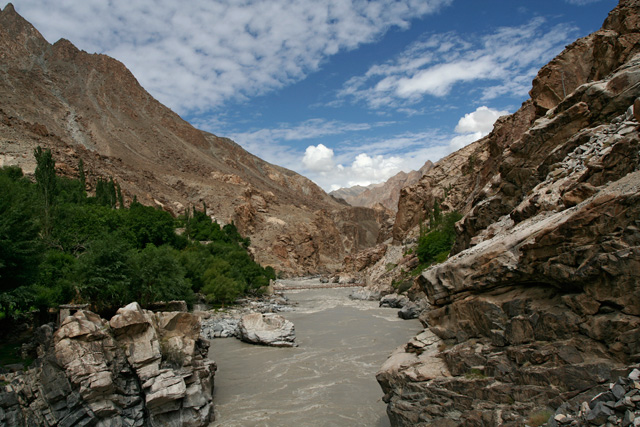
Further downstream, at the edge of Ladakh before Indus flows out of territory accessible from India, the river flows swiftly through a very narrow gorge near the village of Dha. In here, the river descends below ten thousand feet after flowing for a long distance in the highlands of Tibet and Ladakh. The mountains here are steep and the valleys are narrow, but the weather is more hospitable and permits growing a variety of fruits and vegetables. This is perhaps the only place in Ladakh where it is possible to grow wheat.
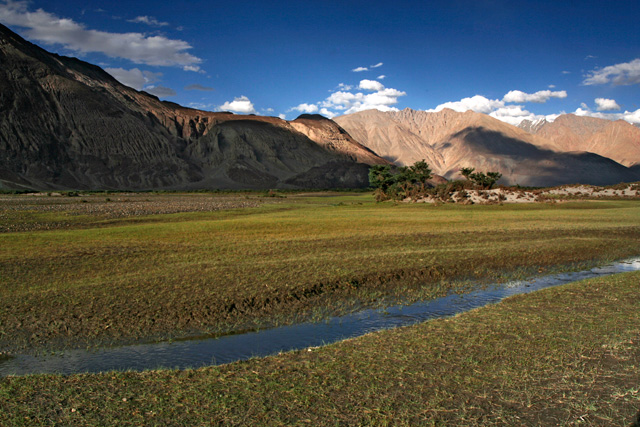
In another corner of Ladakh, towards north, is Nubra Valley, another green oasis in the barren lands of Ladakh. In the wide valley of Shayok River, tiny grass and seabuckthorn shrubs grow in plenty, supporting a small herd of wild bactrian camel. The lush valley with plenty of water from the river allows the people of Nubra Valley to grow many cereals and vegetables, besides juicy apricots.
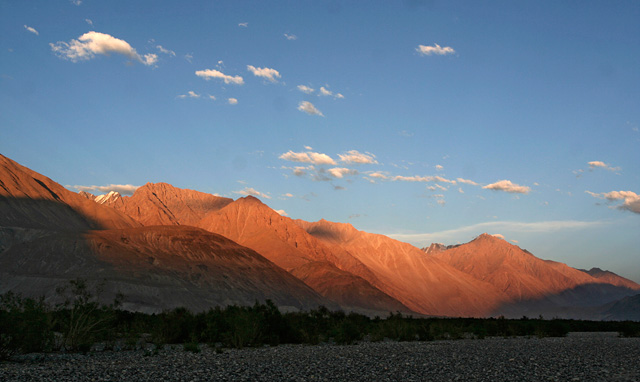
Sun setting over the mountains of Nubra.
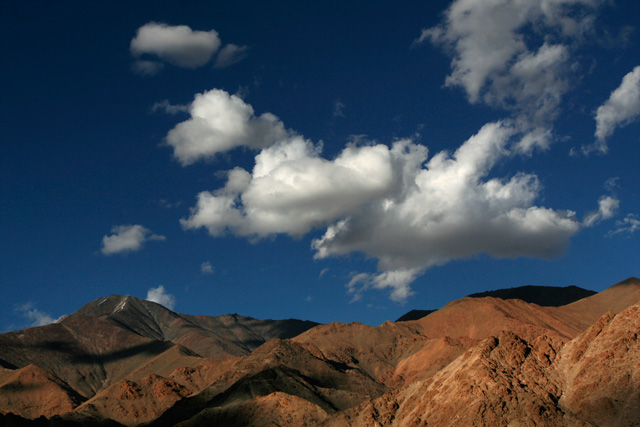
But one doesn’t necessarily have to travel far and wide to every corner of Ladakh to see its amazing landscapes. As soon as you arrive in Leh, you will see tall mountains, puffy white clouds and blue skies welcoming you to Ladakh. A small walk outside Leh is perhaps sufficient to get the glimpses of Ladakh’s landscapes. The explorer, however, has no limits to to what he can see in Ladakh.
Ladakh, the land of high passes, is also home to an ancient Buddhist culture that has remained unchanged for nearly a millennium. Every village in the region supports a monastery, usually located on a crag overlooking the village and serves the spiritual needs of the village’s population. The charm of these monasteries are many, like the ever-smiling monks, complex prayer rituals, young monks (or monklings, as a friend once called them) running around chasing each other in the monastery’s courtyards, the traditional materials of worship, the room of lamps, colourful prayer halls, exuberant festivals, the chortens (or stupas) in the premise and so on. Here is a collection of images of life and still-life of Ladakh’s Buddhist monastic institutions, captured over several visits to many monasteries over a period of three months.
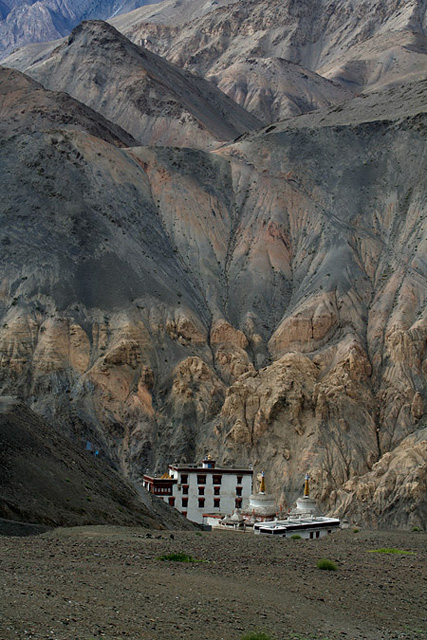
The most striking aspect of the Buddhist monasteries of Ladakh is their location. Ladakh is a remote region in itself and is separated from rest of the world by high mountains. Within it, the monasteries seem to look for the remotest possible place that keeps them away from everything worldly. Once, anyone who would like to make a visit would have had to make a slow and long climb in the rarefied air of Ladakh. Today, most of the monasteries are connected by road, though many still exist that only a few able people can approach. The Lamayuru Monastery in the picture, as you can see, is obviously in someplace faraway and remote. Yet, one can reach even here in a four wheeler. The monastery is believed to be established nearly a thousand years ago.
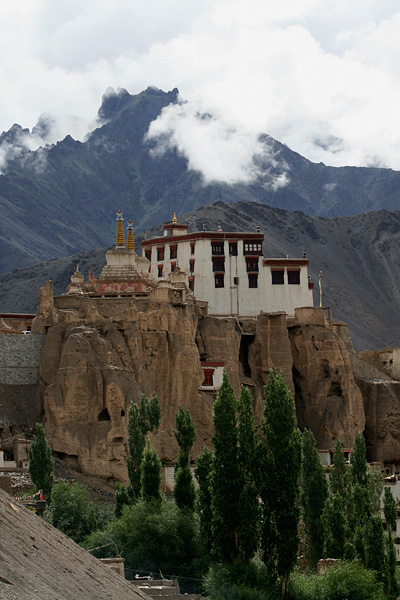
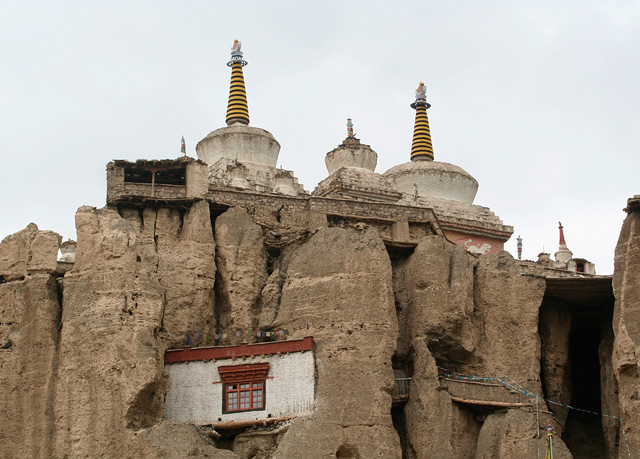
The setting of the monastery at Lamayuru Village is best described as queer. At the first sight, it appears to be hanging delicately on a mound that can collapse any moment. But it has seen a millennium pass by. Sections of the monastery go right under the ground and emerge on vertical walls, like in the picture above.
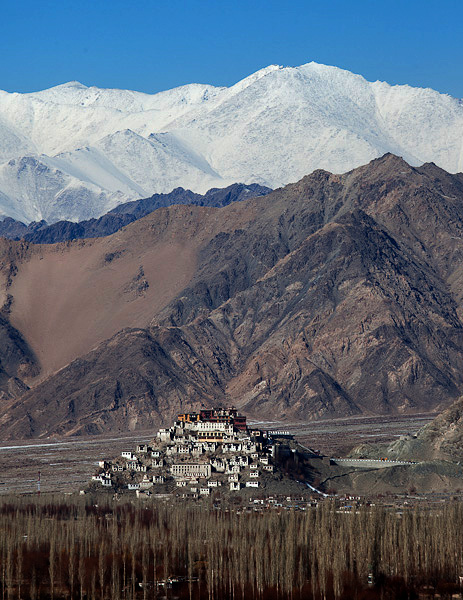
Most monasteries, like the one in Thiksey seen above, are located on a crag overlooking the village. They are built in a place not too close to the village, perhaps to keep away from the everyday life of the villages but at the same time near enough to offer religious services to the pious villagers. Thiksey is one of the largest monasteries in Ladakh, if not the largest. Its cluster of buildings spread haphazardly along a hill and the prayer hall located right on the top are often compared to Lhasa’s Potala Palace.
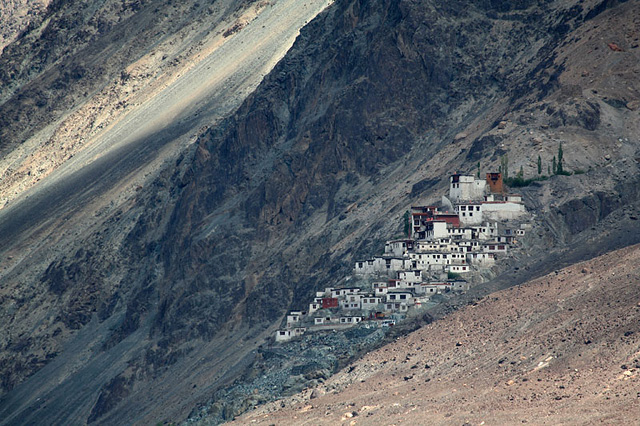
Diskit Monastery in Nubra Valley too is located high up the hill and a short climb from the village at the base of the valley.
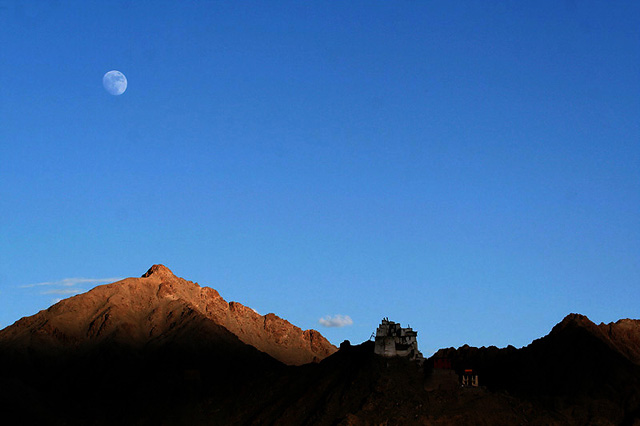
The Namgyal Tsemo Monastery high up the hill and visible like a beacon from anywhere in Leh Town is a great sight against the backdrop of tall hills that surround the town.
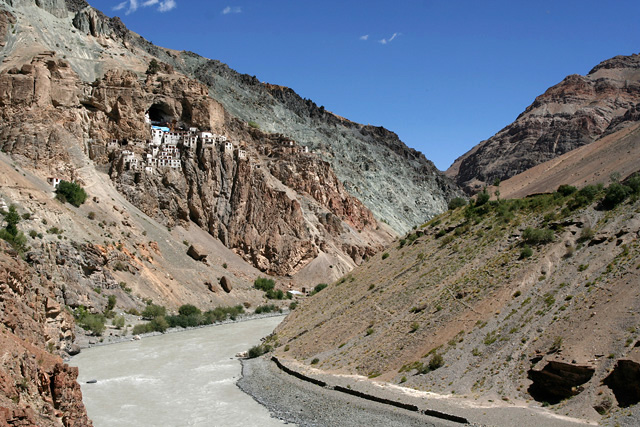
But few monasteries today are really as far away from every place as Phugtal Monastery in the picture above. Located inside a cave on the banks of Lungnak River, it takes two days of walking from the nearest road-head to reach the monastery. And the road head at Padum itself is a two-day of bus ride from Leh. But the distances are shrinking by the day. New roads under construction will link Phugtal in the next few years, and the distance from Leh to Phugtal will shrink to just a day in the next decade when new roads will be built along Zanskar River.
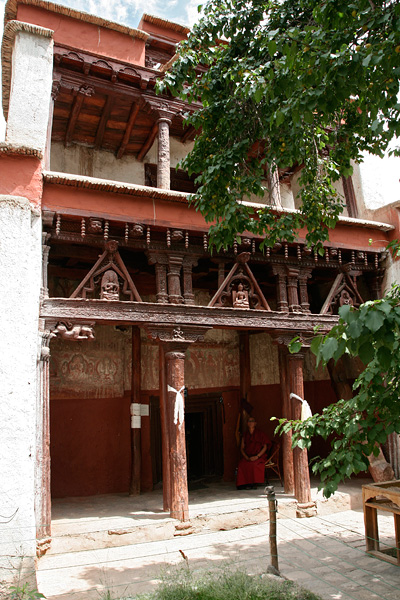
But the monastery at Alchi is an exemption to the trend of building monasteries in unapproachable places. One of the oldest monasteries in the region, Alchi is located on flat ground at the edge of the village, right next to fast-flowing Indus River. Alchi differs from all other monasteries in its design as well. Unlike other monastic institution built with the influence of Tibetan form of Buddhism, Alchi Monastery is said to be built at a time when Buddhism propagated here from Kashmir and the plains of India. The monastery is no longer an active institution, and is currently maintained by the neighbouring Likir Monastery. Rich, beautiful colour paintings have survived the onslaught of time in the inner walls of Alchi. Together with Tabo Monastery in Spiti Valley, Alchi is now in the list of tentative UNESCO World Heritage Site.
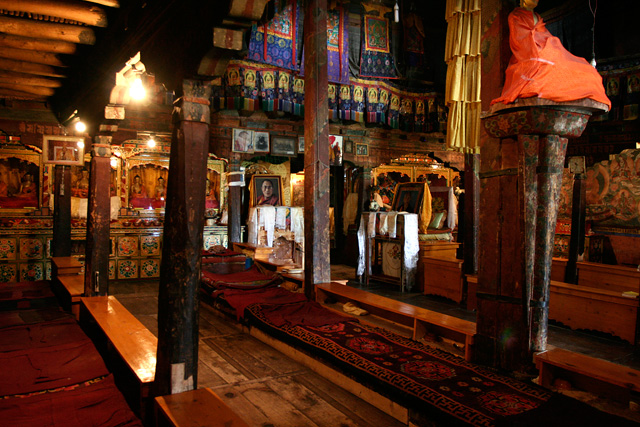
One of the most striking features of the monasteries is the richly decorated prayer hall. The halls are painted from wall to wall with deities and images of Buddhist iconography. The ceiling, the pillars, the seating and the tables, the altar are all decorated with colourful clothes and painting leaving not an inch of room empty, like the prayer hall or dukhnag at Thiksey Monastery in the above picture.
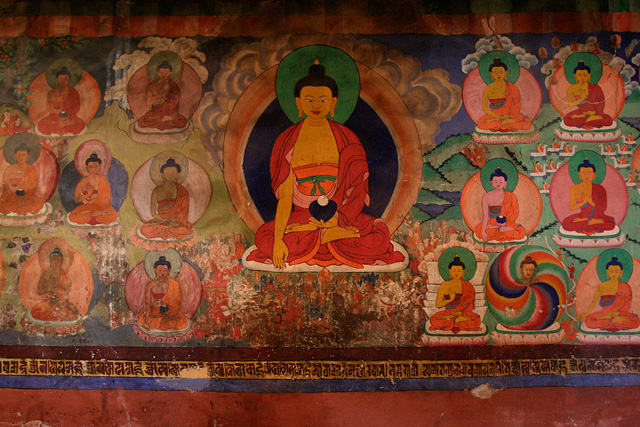
Several incarnations of Buddha, seen on the walls of Thiksey Monastery. Sometimes, the Buddhist iconography can be so detailed and complex that even the monks at the monastery may not be able to describe the details of every one of these murals.
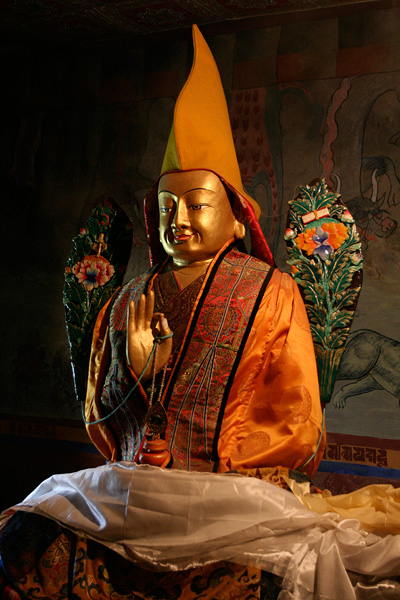
This statue of Tson-ka-pa, the founder of yellow-hat sect (or gelugspa), a popular form of Buddhism in Ladakh and Tibet to which the current Dalai Lama also subscribes to, is frequently seen in the prayer halls of several monasteries across Ladakh.
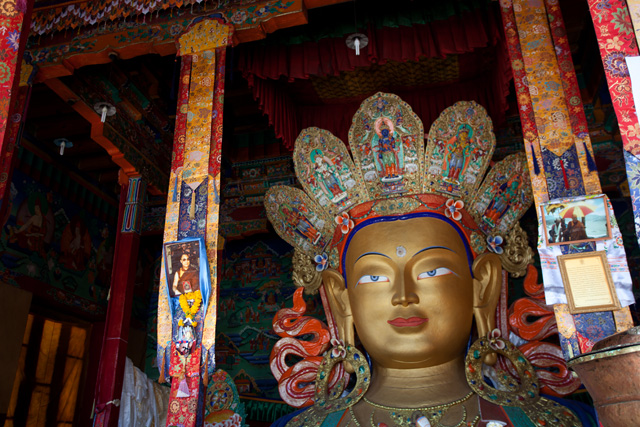
This richly decorated two-storey high statue of Buddha is another beautiful work of art, seen at Thiksey Monastery.
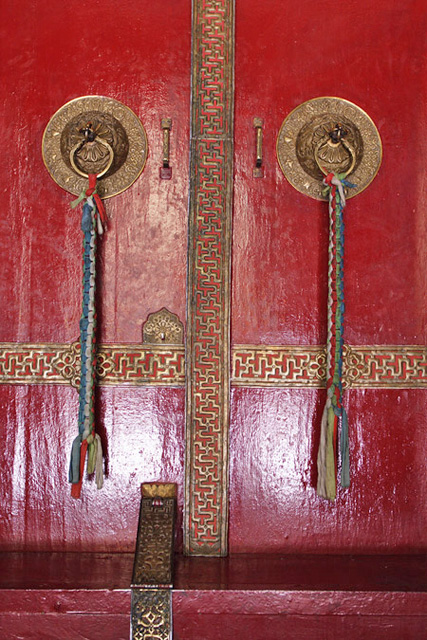
The painted doors of the prayer hall at Diskit Monastery, Nubra Valley, Ladakh
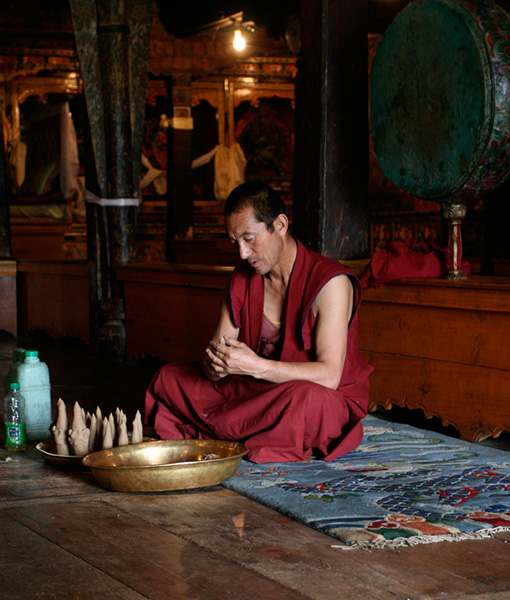
The prayer halls in the monasteries tend to be empty but for a caretaker monk for most part of the day. They come alive and get filled with monks during the morning prayer rituals and on the days when there are special pujas. This monk at Thiksey monastery is preparing torma (?) for decorations for an upcoming puja.
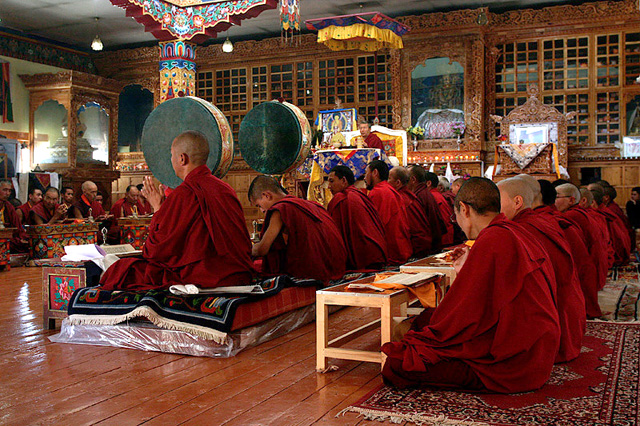
Monks gathered for morning puja at Leh’s Soma Gompa.
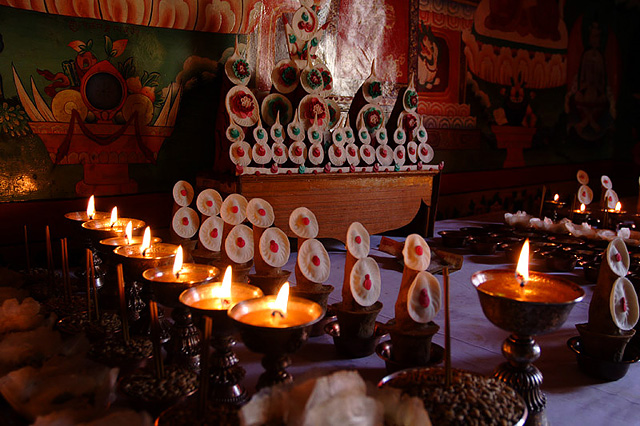
The prayer hall at Likir Monastery comes alive for a special Yamantaka Puja on the event of installing a mandala at the monastery.
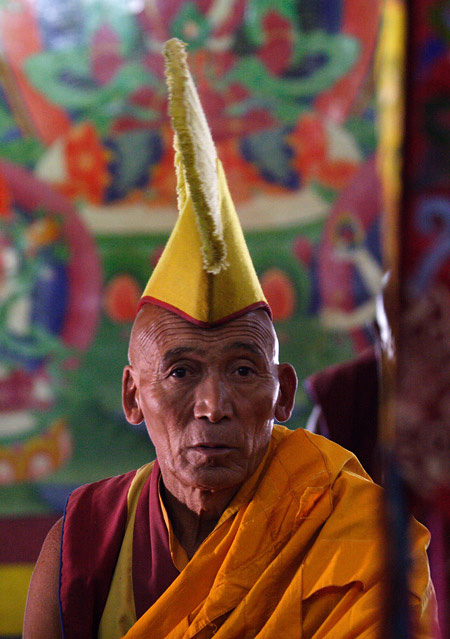
A monk looks on during a special puja at Spithuk Monastery, wearing the traditional yellow hat.
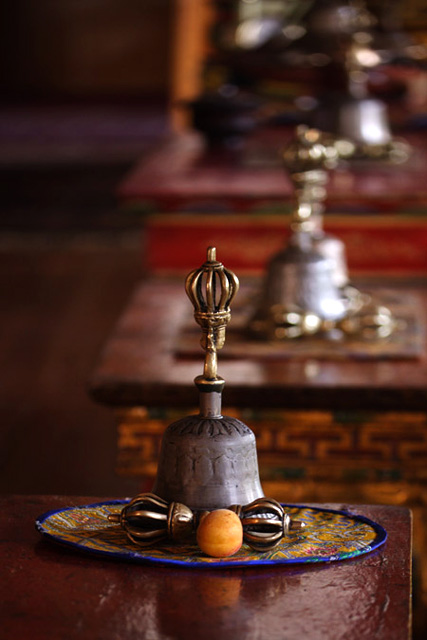
An apricot shares space with bell and a Vajra when the monks take a short break during a special puja ritual at Likir Monastery.
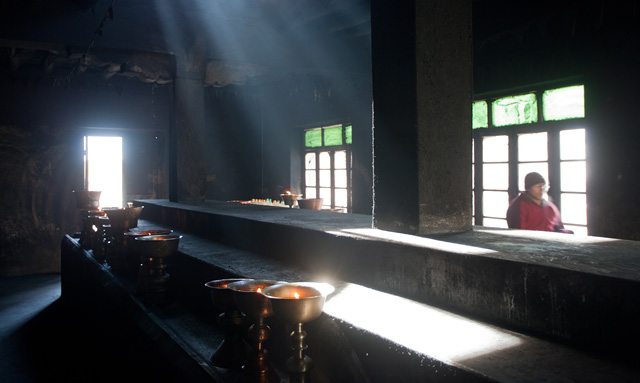
A room of lamp – a small area or a room dedicated for burning wick lamps is a feature of most monasteries in Ladakh. It is a beautiful place where several oil lamps of various sizes and shapes glow in the dull light coming from the windows.
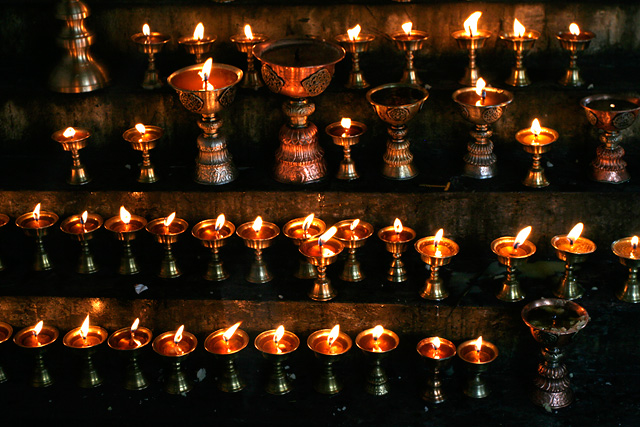
Another room of lamps, this one at Keylong’s Shashur Monastery, all lit up on the day of monastery’s annual festival day.
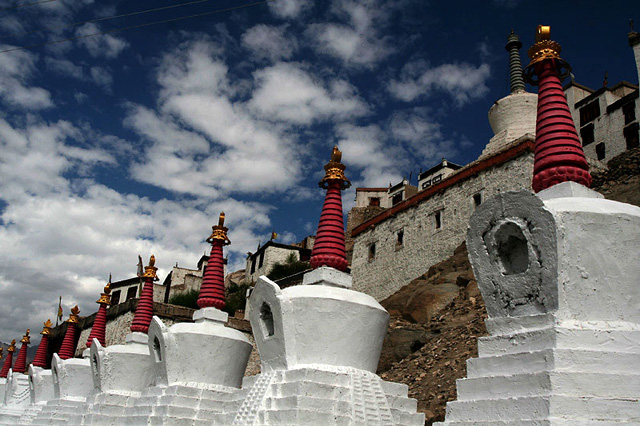
Chortens or stupas (?) are another dominant feature of the monasteries in Ladakh, usually seen in long arrays on the approach to the monastery.
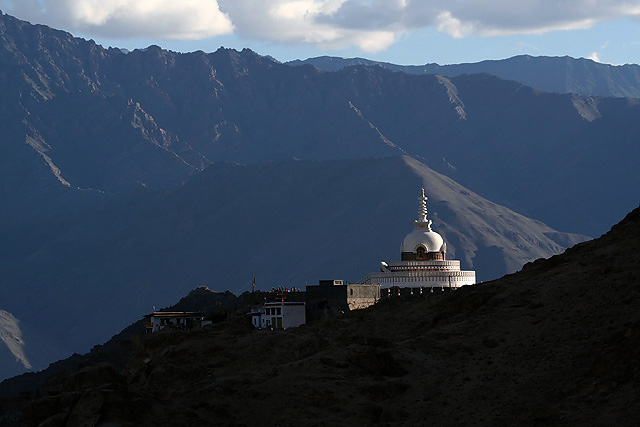
Shanti stupa is perhaps the most dominating and well-known chortens in Ladakh, located on the slopes overlooking Leh town. The views of, and views from Shanti Stupa give a grand preview of Zanskar and Ladakh Ranges and of the spread of Leh Town along Indus Valley.
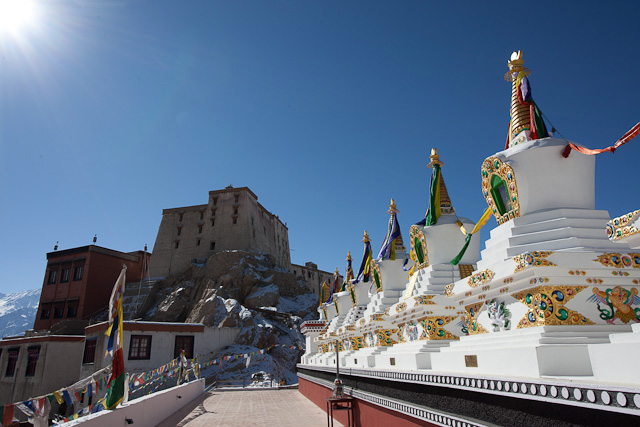
A line of newly built and freshly painted chortens at Thiksey Monastery.
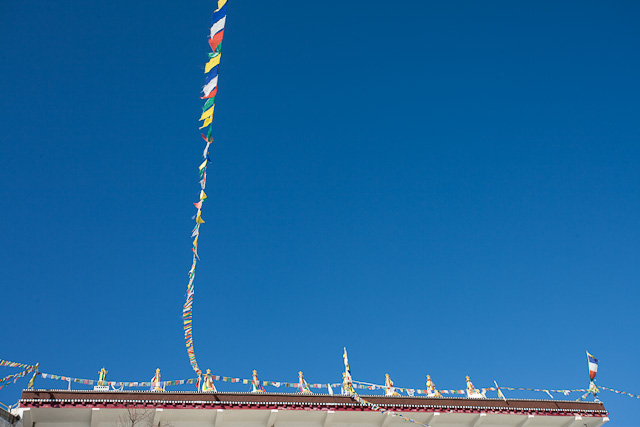
The flutter of prayer flags, a long line of chortens and the clear blue skies make a grand spectacle at Thiksey Monastery.
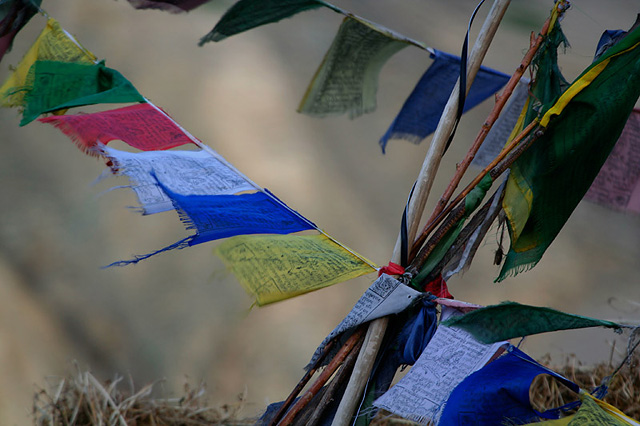
People of Ladakh tie prayer flags at all sacred and important locations. The prayer flags have sacred mantras written on them. Ladakhis believe that when the wind blows, the mantra from prayer flags is carried on and distributed in the air, bringing good karma.
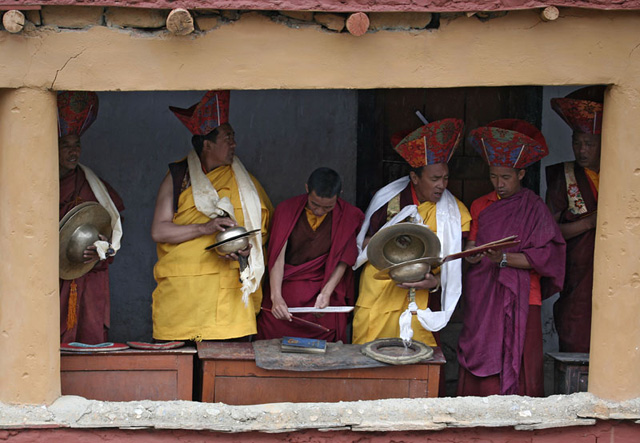
Once in a year, these monasteries celebrate their annual festival, when the premises will be buzzing with activity. The monks prepare for two long days of festivities which involves pujas, traditional music and dances. It is usually attended by the whole village and a large number of outside visitors.
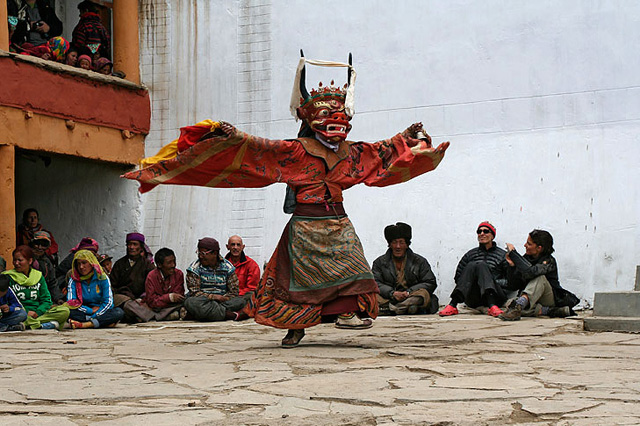
The most sought after event of the festival is the cham-dance, a performances by the monks wearing demonic looking masks.
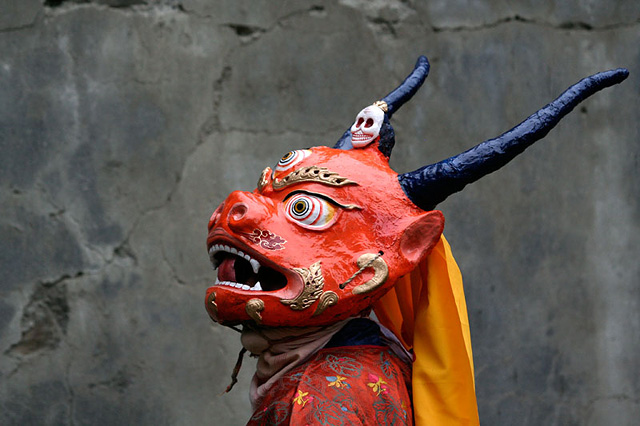
A masked monk performing at Gustor Festival at Korzok Village near Tso Moriri Lake.
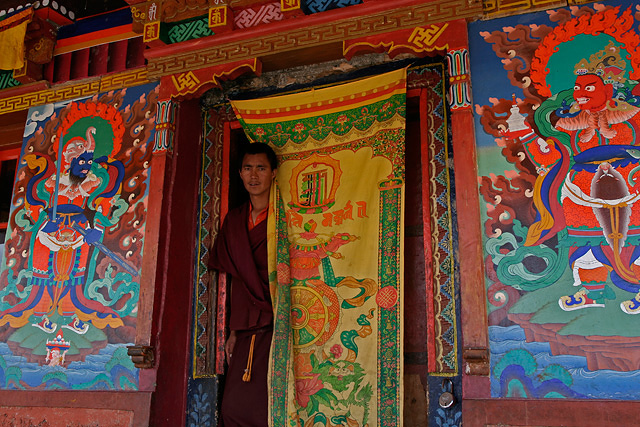
A monk looks through the doors of prayer hall at Korzok Monastery as they prepare for the festivities.
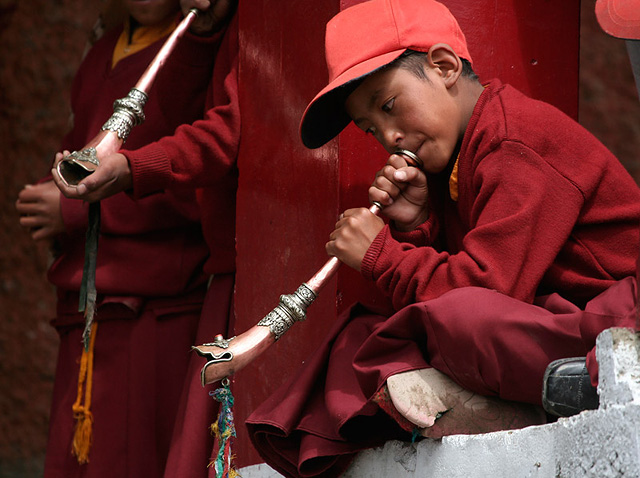
Young monks make an energetic participation at Korzok Gustor Festival.
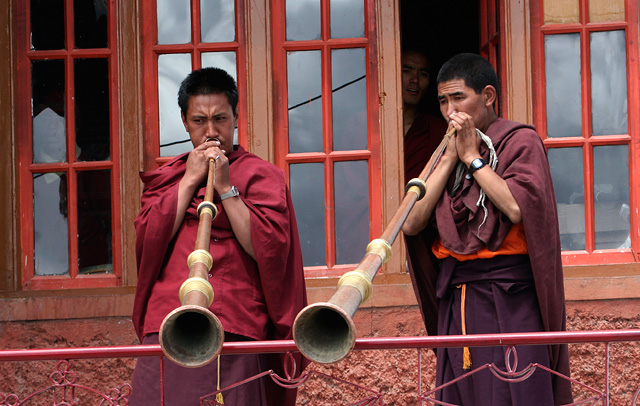
Dung chen, a long wind instrument is used to announce the arrival of rinpoche (chief monk) or the cham dancers. It is best compared to vuvuzelas, both in terms of their length and the sound coming from them.
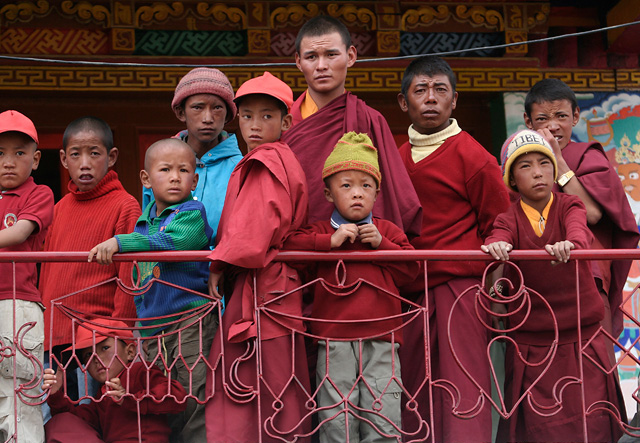
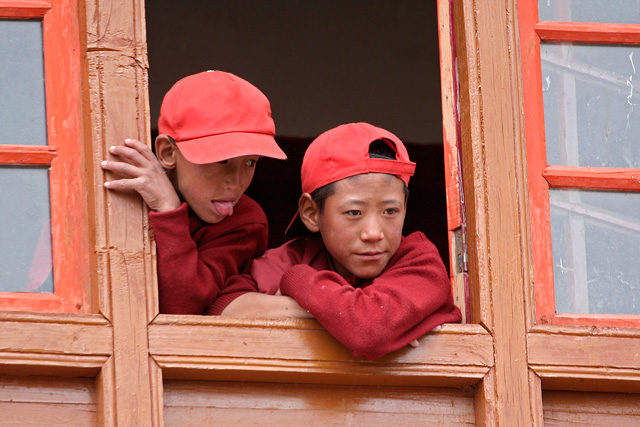
Young monks of different ages watch a cham-dance in progress during Korzok Gustor Festival.




 The image of this little fellow in Thangu Village is northern parts of Sikkim is perhaps the only image I have, of children in Sikkim. It is long time since I backpacked in Sikkim, a place I long to go back to but the the ordeal of reaching there keeps me out. Those were the days when I was shooting with a film camera and focused on photographing landscapes and only landscapes. Hopefully I will return there soon someday to get another dose of this beautiful mountain state.
The image of this little fellow in Thangu Village is northern parts of Sikkim is perhaps the only image I have, of children in Sikkim. It is long time since I backpacked in Sikkim, a place I long to go back to but the the ordeal of reaching there keeps me out. Those were the days when I was shooting with a film camera and focused on photographing landscapes and only landscapes. Hopefully I will return there soon someday to get another dose of this beautiful mountain state.
























































